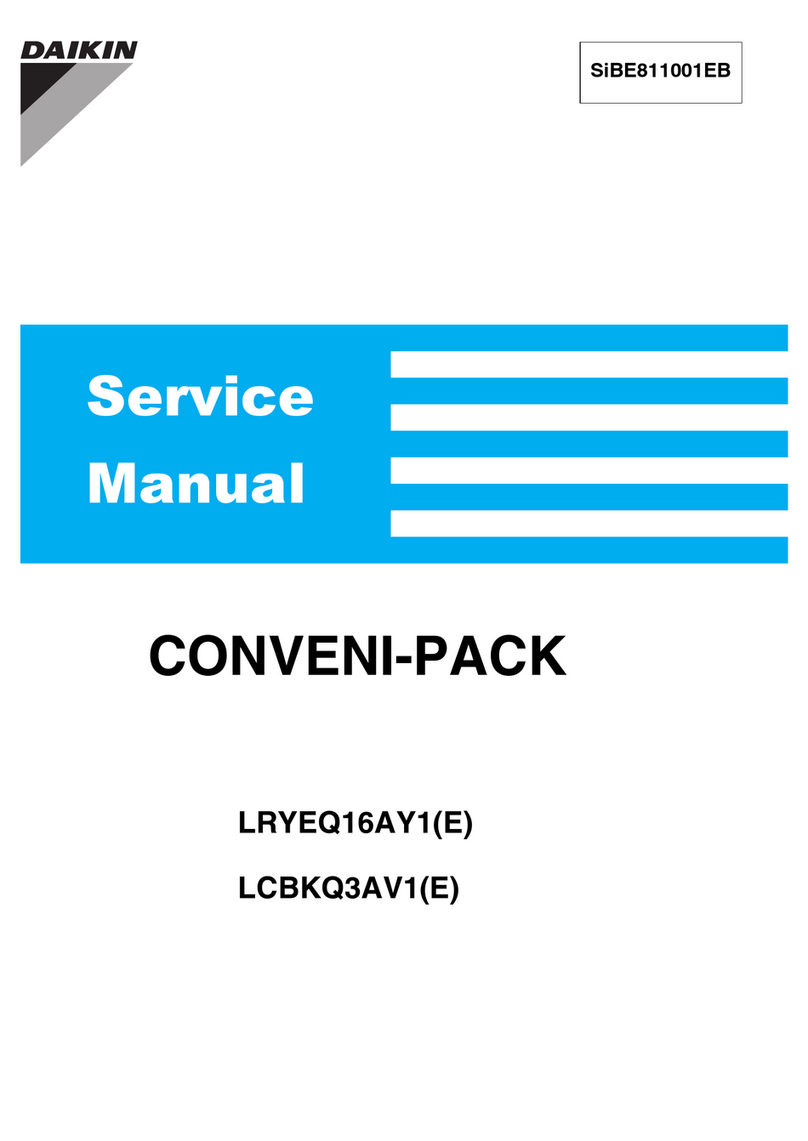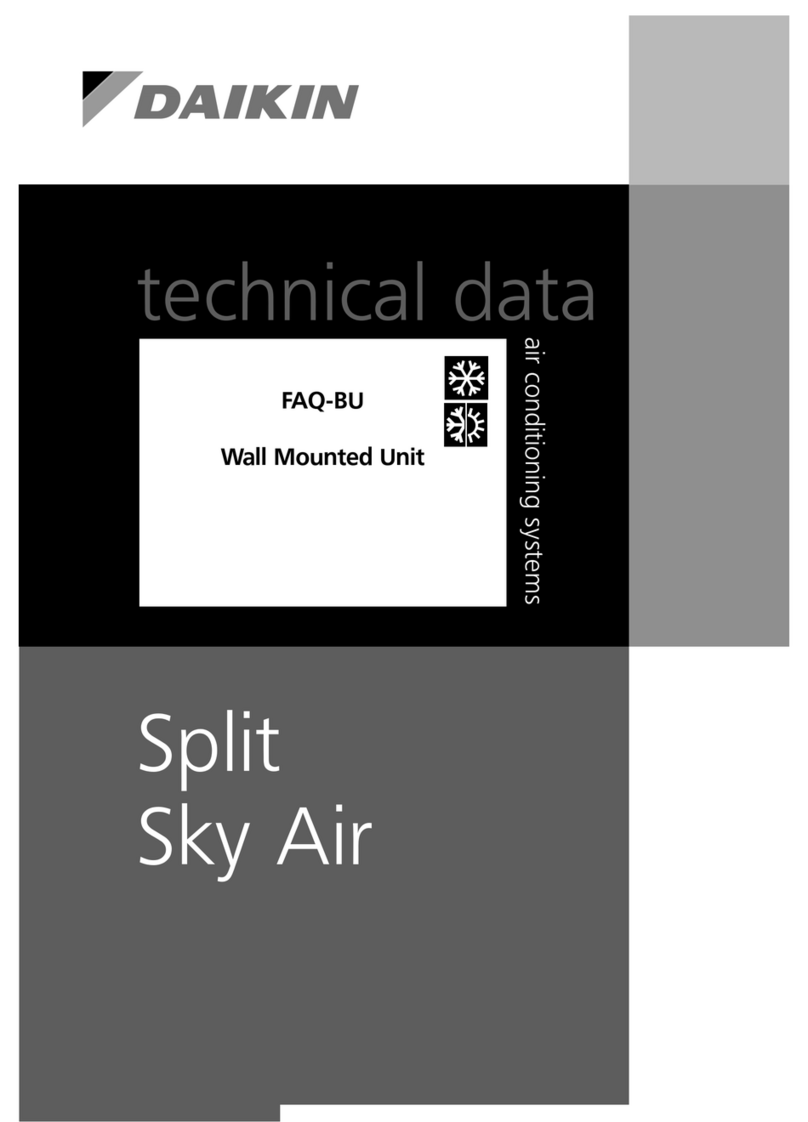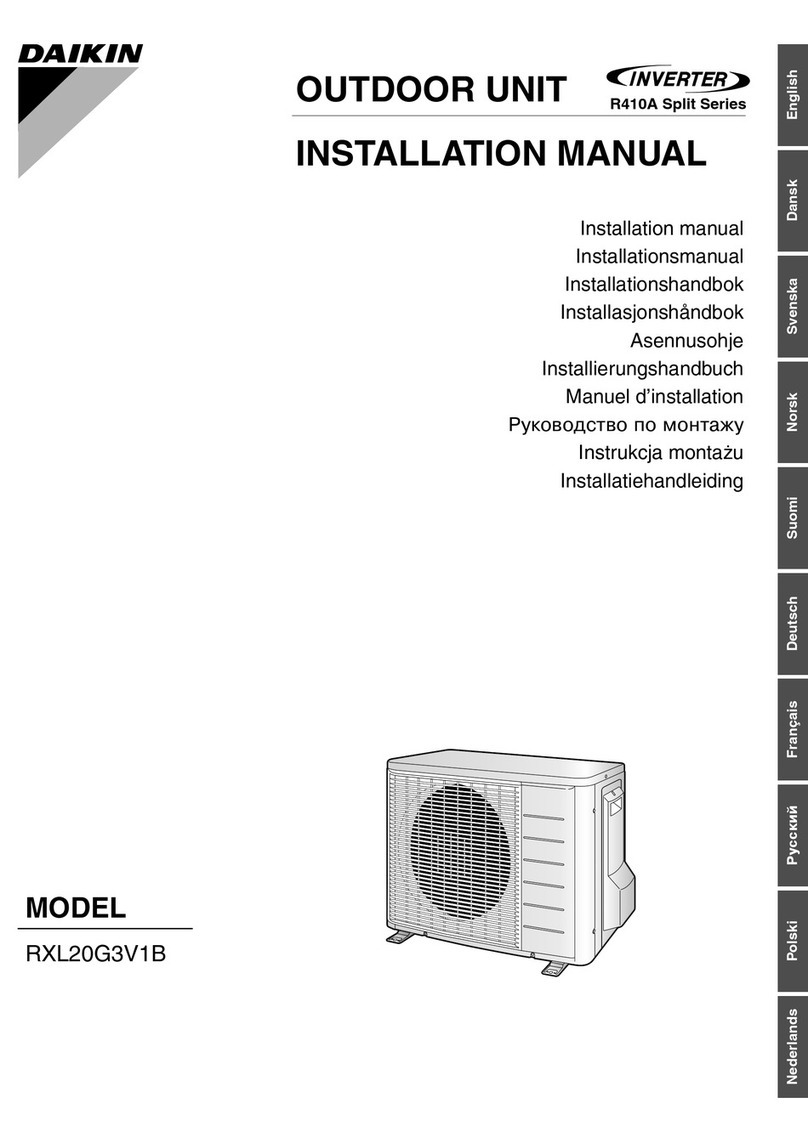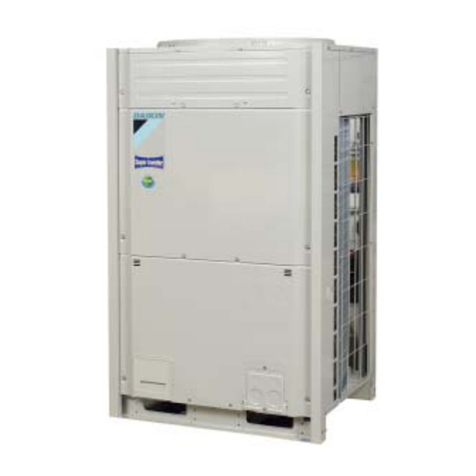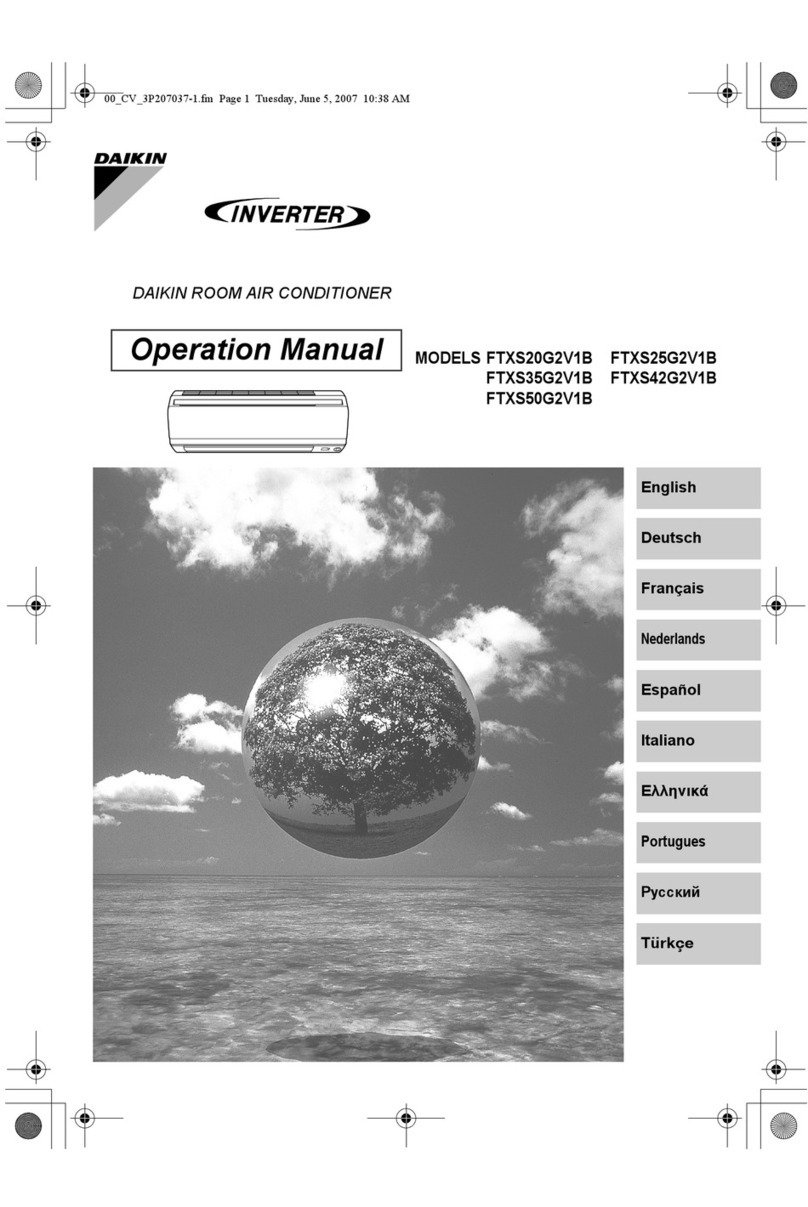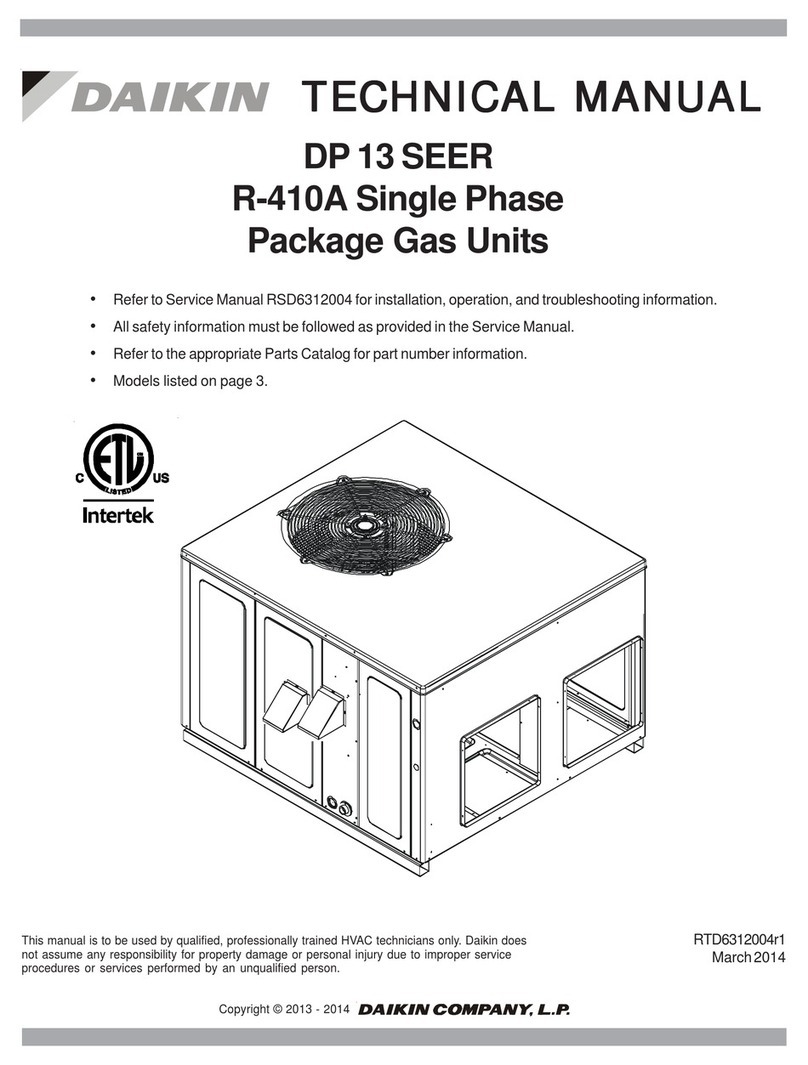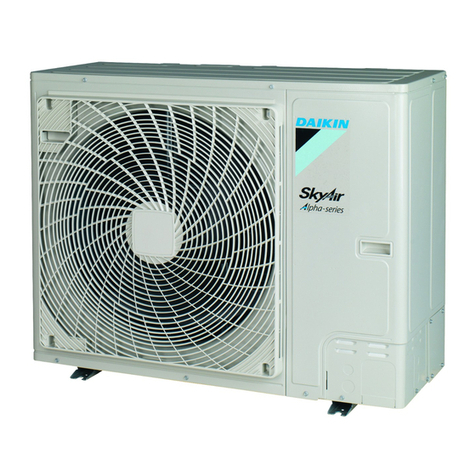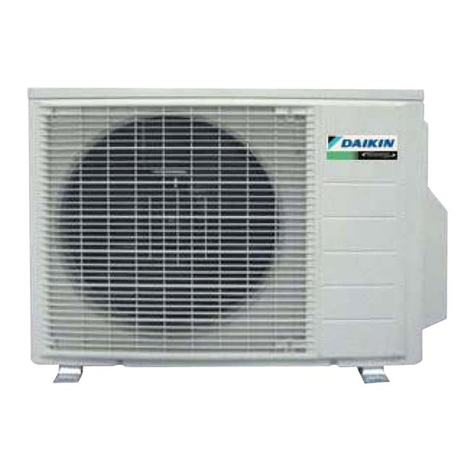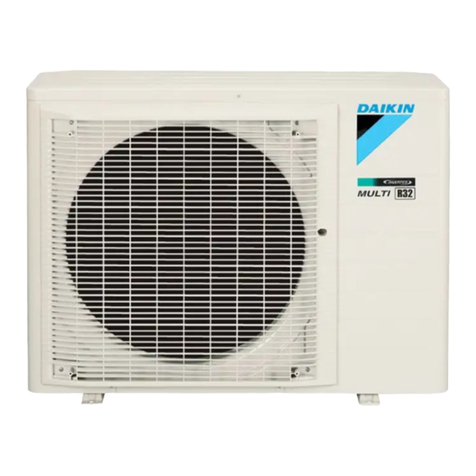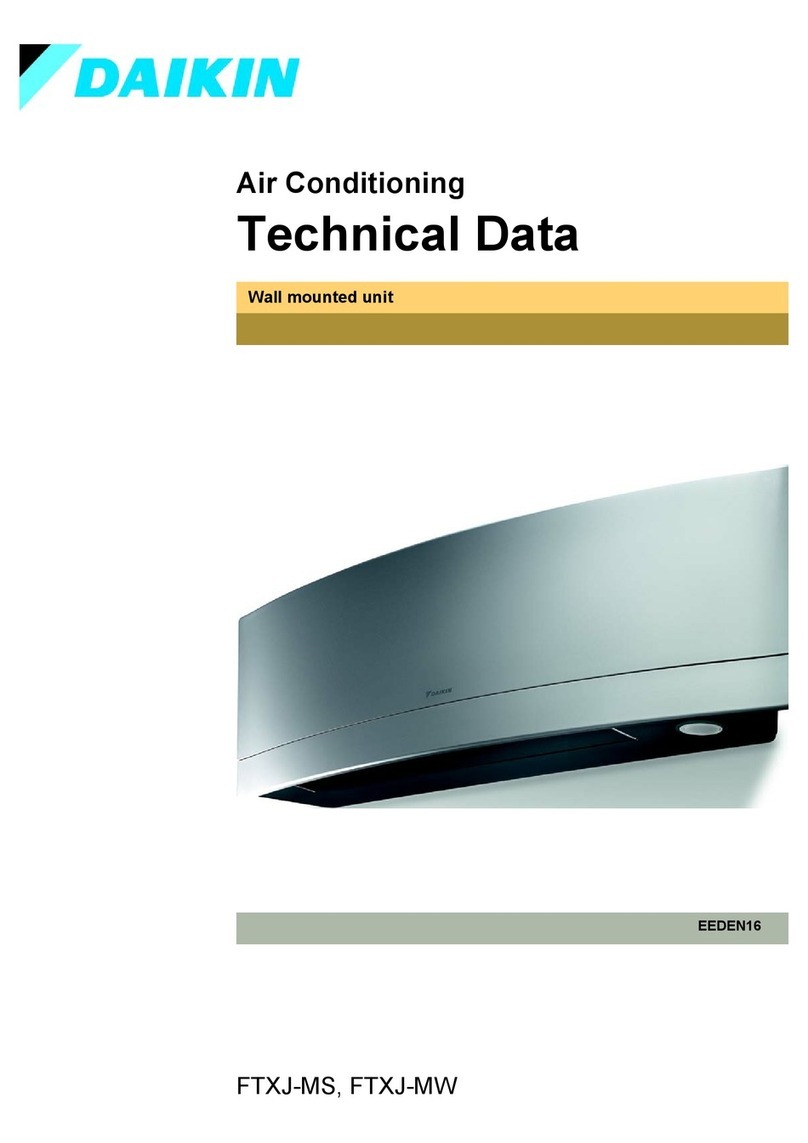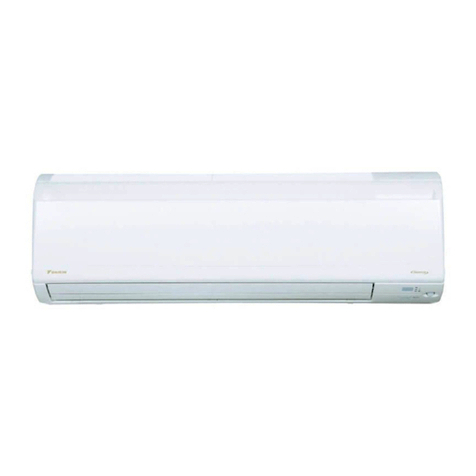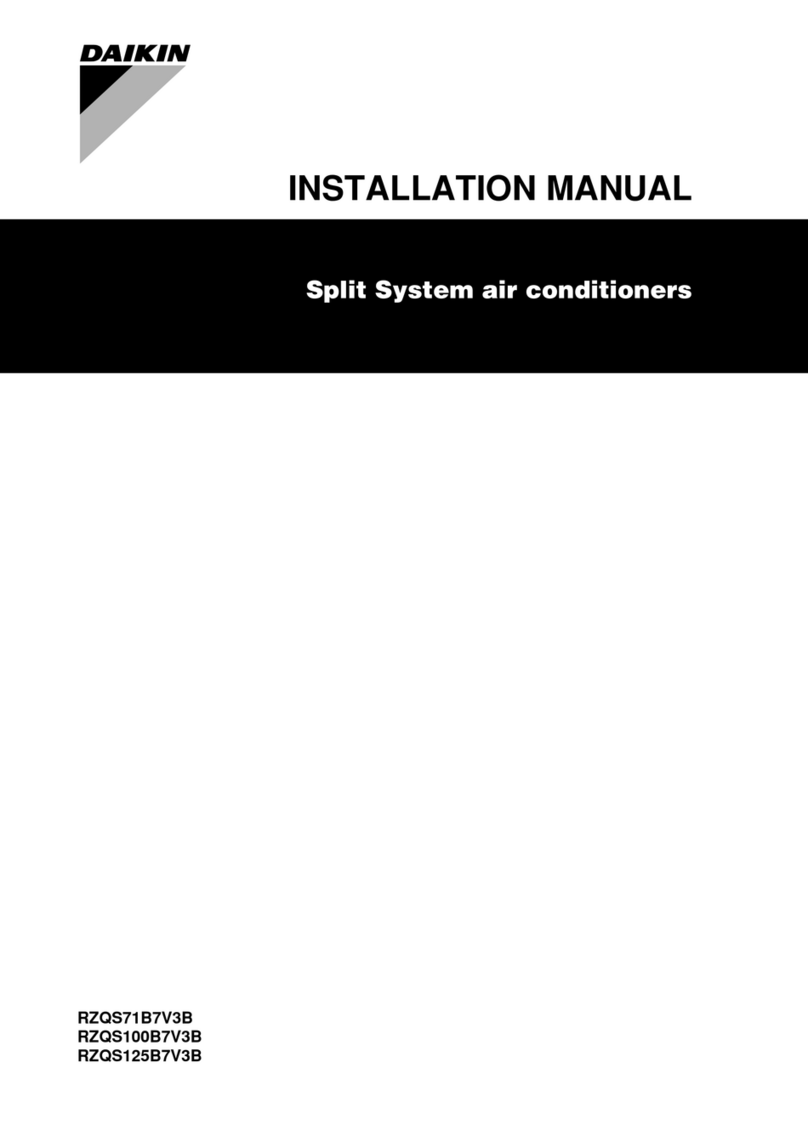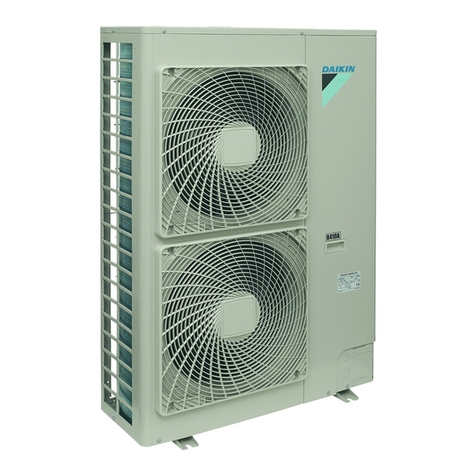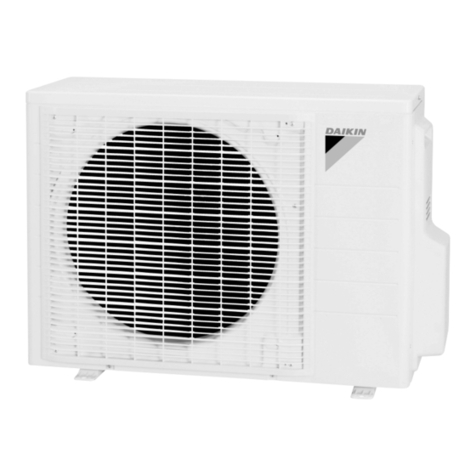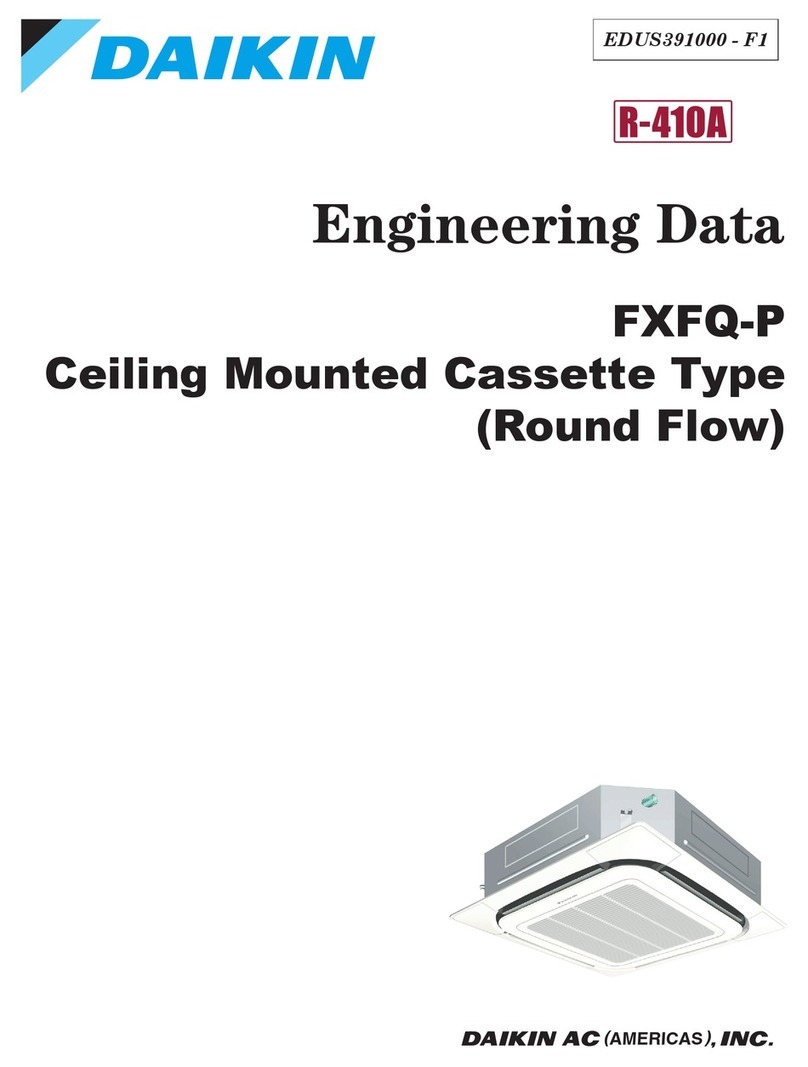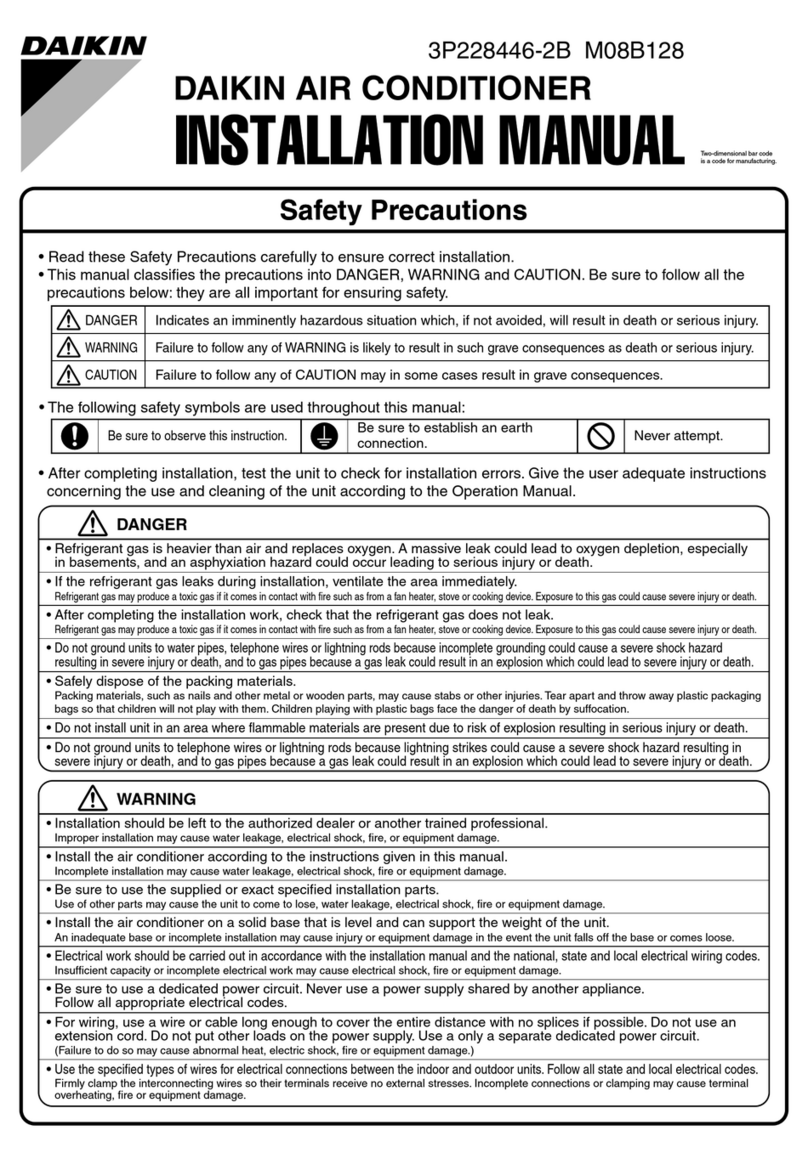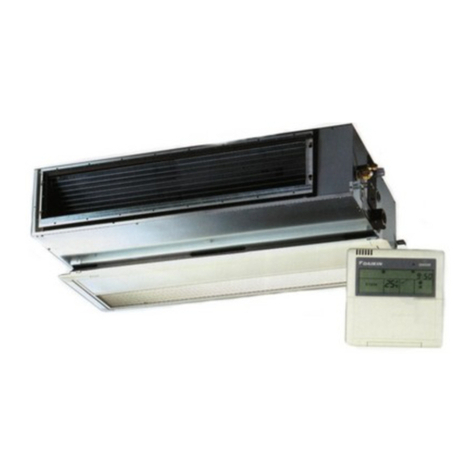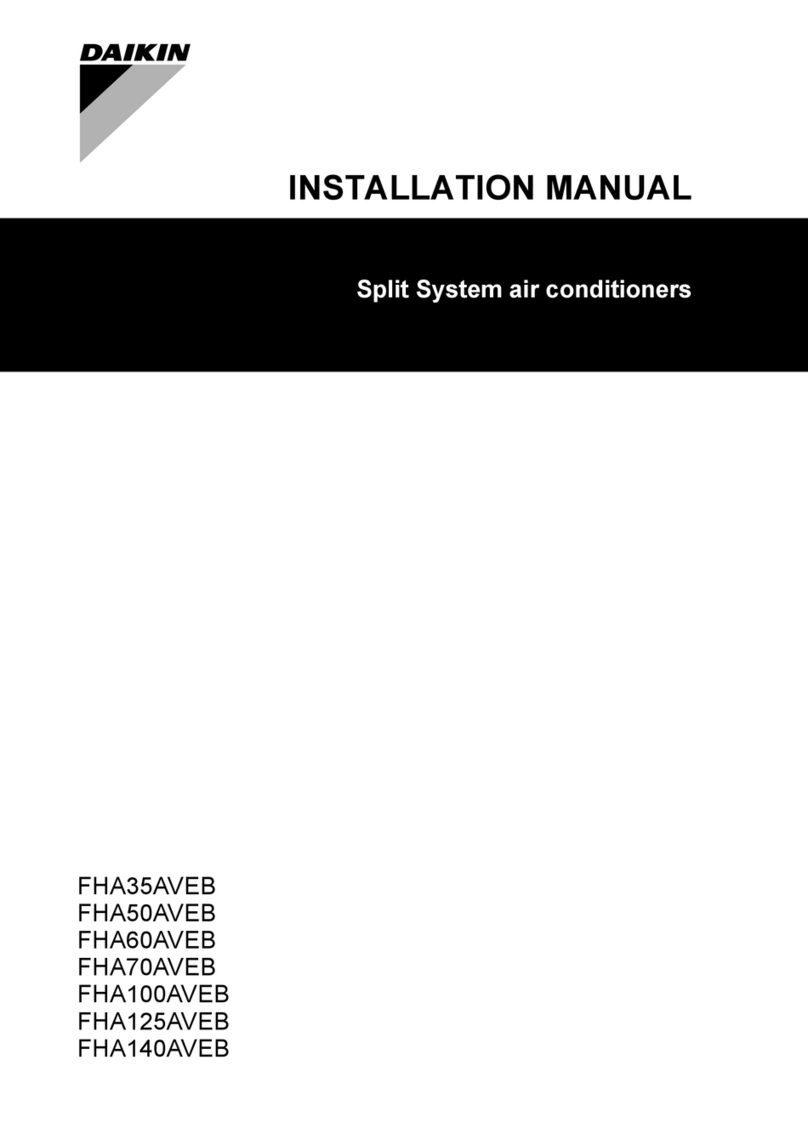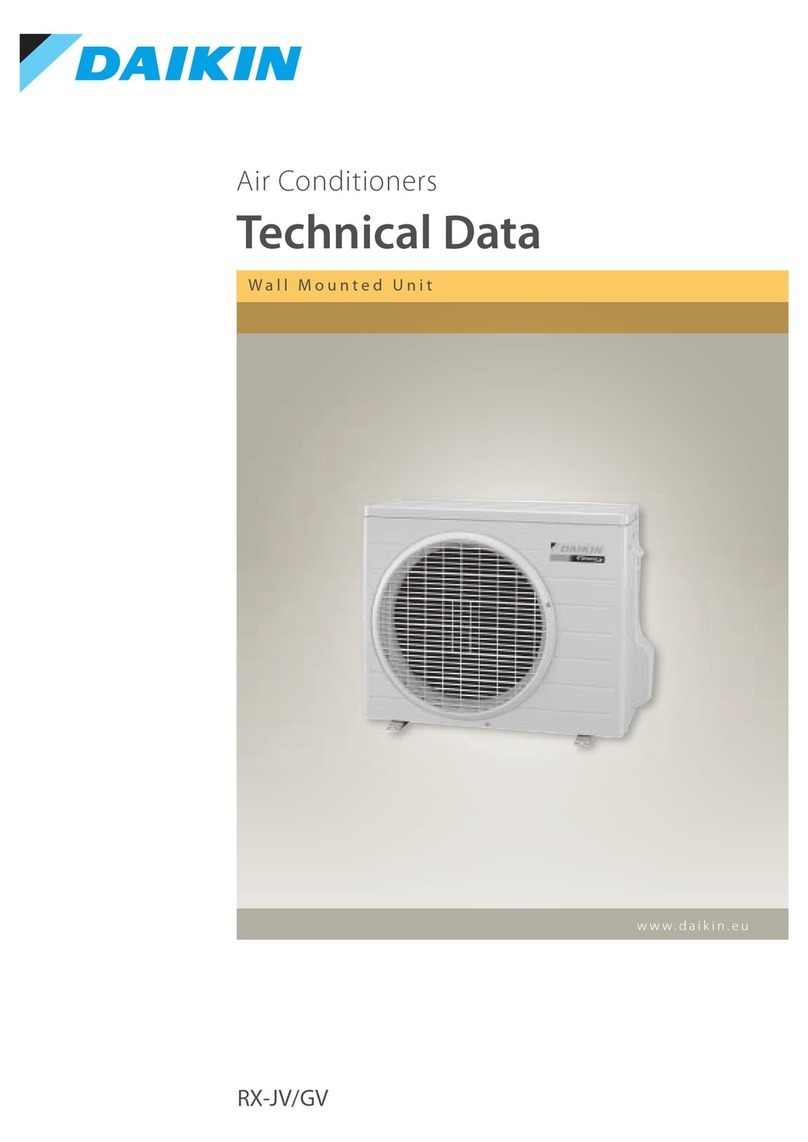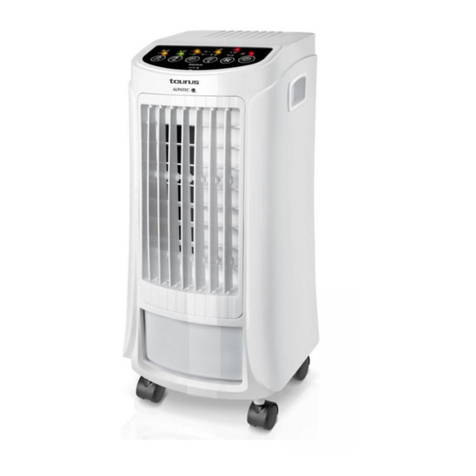
Refrigerant Piping—Pressure
Relief Valves
(ETL Marked Units Only)
All units have individual refrigerant circuits and each circuit is
provided with a spring loaded relief valve. The valve is set to
open when refrigerant pressure reaches 600 psig. The relief
valve accommodates a 3/8" are connection for applications
where it is necessary to connect vent piping and run it outside
the building.
CAUTION
When refrigerant is vented to the outside of the building,
install the vent piping as recommended in ASHRAE Standard
15-1994. Failure to vent properly can result in personal injury.
Water Connections
Due to the variety of piping practices, follow the
recommendations of local authorities. They can supply the
installer with the proper building and safety codes required for
proper installation.
For best performance, install the piping with a minimum
number of bends and elevation changes. Size piping to
minimize system pressure drop.
Piping should contain the following:
1. Vibration eliminators to reduce vibration and noise
transmission to the building.
2. Shutoff valves to isolate the unit from the piping system
during unit servicing.
3. Manual or automatic air vent valves at the high points of
the system.
4. Some means of maintaining adequate system water
pressure (e.g., expansion tank or regulating valve).
5. Temperature and pressure indicators located at the unit
to aid in servicing.
6. A strainer or some means of removing foreign matter,
which can damage the pump and shorten unit life, from
the water before it enters the pump. Such damage is
not covered by warranty. Place it far enough upstream
to prevent cavitation at the pump inlet (consult pump
manufacturer for recommendations). Using a strainer
prolongs pump life and helps maintain system
performance.
Condenser Piping
1. Units can be specied with water and condensate
connections on either the left or right side of the unit.
2. All condensers are factory piped for a common condenser
water supply and a common condenser water return
connection.
3. Make eld piping connections to factory-provided piping,
locating them as indicated on the unit submittal drawings.
Run the piping connections to the outside of the unit
cabinet. Standard connections are ODS copper with
victaulic connections.
4. Make supply and return water connections at the proper
locations as indicated by the dimensional drawings.
5. Units with factory-mounted water side economizer should
not require head pressure control. The economizer
typically elevates the water temperature by 5°F to
10°F before entering the condenser, allowing suitable
condenser water temperatures whenever the tower supply
temperature is 50°F (10°C) or higher. Mechanical cooling
is locked out below 55°F (12.8°C) EWT.
6. If entering condenser water temperatures will go below
55°F (12.8°C), provide head pressure control. Fan cycling
and/or modulating discharge dampers on the cooling
tower are often used, or a 3-way bypass around the
tower is used to maintain condenser water temperature.
If multiple units are in the loop, it is generally more cost
effective to use cooling tower control to maintain the
temperature at >55°F (12.8°C).
The factory installed water regulating valve is placed in
the water line entering the condenser; and shuts down
to prevent water from siphoning out of the condensers.
For systems where a constant pumping head is required,
install the water regulating valve in a bypass line around
the condensers. It then must open on falling discharge
pressure.
These typical systems, depending on the specic
application, must maintain a constant condensing
pressure regardless of temperature conditions and must
provide adequate head pressure for proper thermostatic
expansion valve operation. A minimum head pressure of
294 psi (21.3 bar.) (95°F [35°C] condensing temperature)
is recommended.
7. Condenser tube velocities must not exceed 10' per
second (3 m/s) (approximately 7.5 gpm/ton [0.47 lps/ton]).
Figure 11: Condenser Regulating Valve
IM 1032-2 • Self-Contained Air Conditioning System 10 www.DaikinApplied.com
InsTallaTIon
